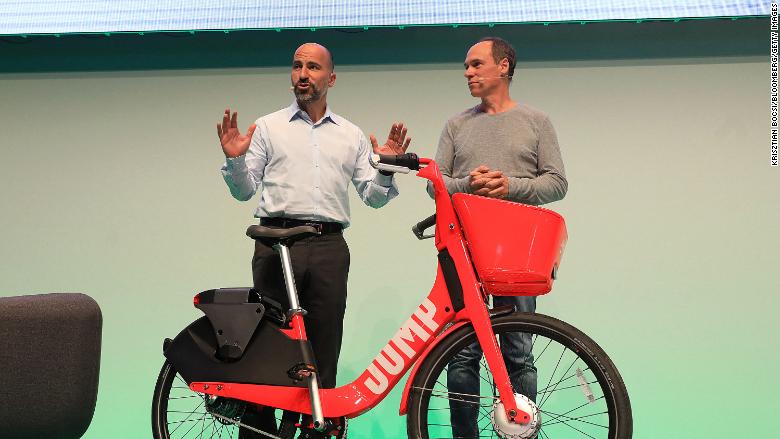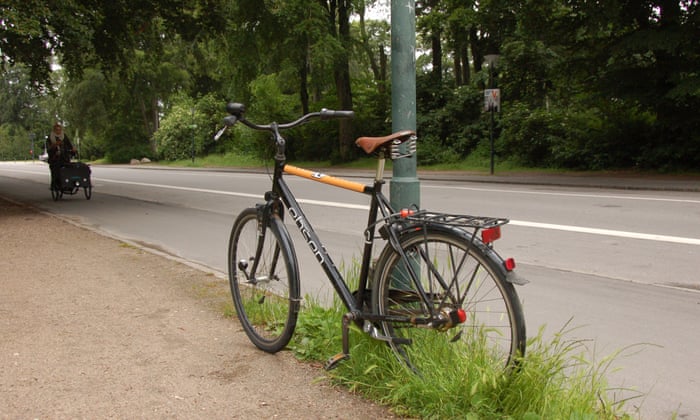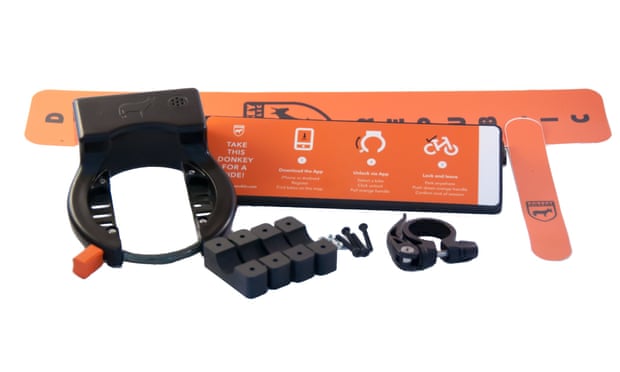Writing headlines is a skill unto itself. Some would even argue that it's an artform. It does, after all, take a certain kind of creativity to come up with something like "Headless Body In Topless Bar."
It might actually be more difficult to come up with a title for an individual article, which is why those who write articles almost never write the titles for them. (When I wrote for local newspapers, I don't think any of my articles bore titles I created.) The goal is to create something that encapsulates the article without giving too much away--and fits into whatever space on the page is allotted to it.
So, when I saw the following title, I knew I didn't have to read the article: "Bicycle Parking Sucks at UW Station But Sound Transit Says They're Making It Better." But I read the article, which appeared on The Stranger, anyway. One reason, I guess, is that I was looking to confirm a bit of my cynicism: when everyone knows a situation isn't good, some official says they're doing what they can to improve it. We hear a variation of that theme just about every day here in New York, whether it's in reference to bike lanes, subway service or any number of other aspects of daily life in the Big Bagel.
Still, I'm glad I read the article. For one thing, it showed me that in Seattle--which was probably the most "bike-friendly" major US city before Portland took that title--people don't ride their bikes for all or even part of their commutes for at least one of the same reasons people in other parts of the US leave their bikes home when they go to work: There's no secure place to park at the workplace or transit station.
Now, I know that Seattle is more spread-out than New York or Boston or San Francisco. But even in those cities, there are areas remote from public transportation. And, of course, there are people who commute from nearby suburbs. Many of those commuters drive into the city, but others drive to the station where they take a bus or train into the city. Some, I am sure, might be enticed to ride their bikes (or to get bikes in the first place) if, on their way home, they knew they could find their bikes intact.
In that article, though, there was a twist. Really, it shouldn't have surprised me, because one of the goals of American urban planning still is (or seems to be) to keep as many motor vehicles as possible moving through a city's streets. A "creative" solution for "reducing congestion", according to the city's Department of Transportation, is to offer a discount to people who use Uber, Lyft or other "ride share" companies to reach their trains or buses.
Data compiled from New York, Boston, San Francisco, Washington and other large US cities shows that these "ride share" companies have actually increased the number of motor vehicles on the streets. In New York, as an example, vehicular traffic had actually declined for several years until 2015. It was around that year that "ride share" services became popular in Gotham. Since then, traffic has increased.
One reason is that, for the most part, "ride shares" don't replace private automobile trips. To the contrary, they are used by more affluent customers who don't want the inconvenience of taking the bus or train, or of hailing a taxi. Also, research indicates that people aren't using Uber or Lyft only to get to work or go to the airport: They are using these services to go to a movie, the theatre, a restaurant or shop. Moreover, they might not have made such outings if they'd had to take the subway or bus.
Moreover, surveys indicate that some people are using these services instead of cycling to work, school or shop. Ironically, some of them decide against cycling because of the traffic to which their Uber or Lyft rides contribute!
Another reason why "ride share" companies don't reduce congestion is the reason why I have been enclosing "ride share" in quotation marks. Research has confirmed something I've noticed anecdotally: Most rides are taken by individual customers or couples, most of whom wouldn't dream of sharing a ride with a total stranger. Moreover, "ride share" drivers spend as much as 60 percent of their time in their cars driving nobody but themselves. In other words, they drive more to and between "lifts" than to actually transport their passengers.
As long as planners and officials can trot out "ride share" services as a solution to traffic congestion, bike parking--and much else for cyclists--will "suck" in many places.
It might actually be more difficult to come up with a title for an individual article, which is why those who write articles almost never write the titles for them. (When I wrote for local newspapers, I don't think any of my articles bore titles I created.) The goal is to create something that encapsulates the article without giving too much away--and fits into whatever space on the page is allotted to it.
So, when I saw the following title, I knew I didn't have to read the article: "Bicycle Parking Sucks at UW Station But Sound Transit Says They're Making It Better." But I read the article, which appeared on The Stranger, anyway. One reason, I guess, is that I was looking to confirm a bit of my cynicism: when everyone knows a situation isn't good, some official says they're doing what they can to improve it. We hear a variation of that theme just about every day here in New York, whether it's in reference to bike lanes, subway service or any number of other aspects of daily life in the Big Bagel.
Still, I'm glad I read the article. For one thing, it showed me that in Seattle--which was probably the most "bike-friendly" major US city before Portland took that title--people don't ride their bikes for all or even part of their commutes for at least one of the same reasons people in other parts of the US leave their bikes home when they go to work: There's no secure place to park at the workplace or transit station.
Now, I know that Seattle is more spread-out than New York or Boston or San Francisco. But even in those cities, there are areas remote from public transportation. And, of course, there are people who commute from nearby suburbs. Many of those commuters drive into the city, but others drive to the station where they take a bus or train into the city. Some, I am sure, might be enticed to ride their bikes (or to get bikes in the first place) if, on their way home, they knew they could find their bikes intact.
 |
| I can see why bicycle parking "sucks" at this station! |
In that article, though, there was a twist. Really, it shouldn't have surprised me, because one of the goals of American urban planning still is (or seems to be) to keep as many motor vehicles as possible moving through a city's streets. A "creative" solution for "reducing congestion", according to the city's Department of Transportation, is to offer a discount to people who use Uber, Lyft or other "ride share" companies to reach their trains or buses.
Data compiled from New York, Boston, San Francisco, Washington and other large US cities shows that these "ride share" companies have actually increased the number of motor vehicles on the streets. In New York, as an example, vehicular traffic had actually declined for several years until 2015. It was around that year that "ride share" services became popular in Gotham. Since then, traffic has increased.
One reason is that, for the most part, "ride shares" don't replace private automobile trips. To the contrary, they are used by more affluent customers who don't want the inconvenience of taking the bus or train, or of hailing a taxi. Also, research indicates that people aren't using Uber or Lyft only to get to work or go to the airport: They are using these services to go to a movie, the theatre, a restaurant or shop. Moreover, they might not have made such outings if they'd had to take the subway or bus.
Moreover, surveys indicate that some people are using these services instead of cycling to work, school or shop. Ironically, some of them decide against cycling because of the traffic to which their Uber or Lyft rides contribute!
Another reason why "ride share" companies don't reduce congestion is the reason why I have been enclosing "ride share" in quotation marks. Research has confirmed something I've noticed anecdotally: Most rides are taken by individual customers or couples, most of whom wouldn't dream of sharing a ride with a total stranger. Moreover, "ride share" drivers spend as much as 60 percent of their time in their cars driving nobody but themselves. In other words, they drive more to and between "lifts" than to actually transport their passengers.
As long as planners and officials can trot out "ride share" services as a solution to traffic congestion, bike parking--and much else for cyclists--will "suck" in many places.




